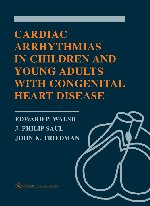Part I: Basic Principles - INTRODUCTORY CONCEPTS
Development and Anatomy of the Cardiac Conducting System
Genetic Basis of Disturbances of Cardiac Rhythm and Conduction
Transesophageal Atrial Recording and Pacing
Intracardiac Electrophysiologic Testing in Pediatric Patients
Clinical Approach to Diagnosis and Acute Managment of
Tachycardias
SPECIFIC TACHYCARDIAS - Automatic Atrial and Junctional
Tachycardias
Atrial Reentrant Tachycardias
Atrioventricular Node Reentry Tachycardias
Accessory-Pathway-Mediated-Tachycardias
Ventricular Arrhythmias in Children and Young Adults
Long QT Syndrome
BRADYCARDIAS - Sinus Node Dysfunction
Atrioventricular Conduction Disturbances
Part II: Catheter and Device Therapy
Unique Aspects of Pacemaker Implantation in Pediatric Patients
Implantable Cardioverter-Defibrillators in Pediatric Patients
Advanced Concepts and Techniques of Cardiac Mapping
Catheter Ablation of Ectopic Atrial Tachycardia
Technical Aspects of Intraatrial Reentrant Tachycardia Ablation
Ablation of Accessory Pathways
Catheter Ablation for Atrioventricular Node Reentry
Part III: Evolving Issues
Indications for Catheter Ablation in Infants and Children
Management of Vasovagal Syncope: Pharmacologic, Nonpharmacologic
or Pacing
Managment of Fetal Tachycardia
Managment of Late Postoperative Atrial Flutter
Tachycardia-Induced Cardiomyopathy
Appendix: Antiarrhythmic Drug Doses for Pediatric Patients
Index


